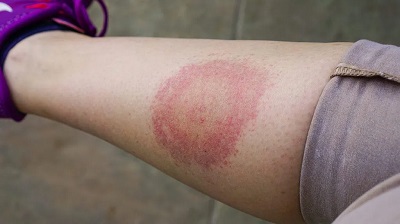Borrelia burgdorferi - Morphology, Culture, Clinical manifestation, Lyme Disease
Introduction to Borrelia burgdorferi
Borrelia burgdorferi is one of the medically important microorganisms and is the causative agent of Lyme disease.
Morphology of Borrelia burgdorferi
Morphologically, Borrelia burgdorferi is a gram-negative bacteria with unequal, loose 5-10 spiral coils with one or both pointed ends. It measures 8-20 μm x 0.2-0.4 μm and has around 15-20 endofalgella per cell.
It is stained by Giemsa stain for microscopy where it exhibits cork-screw-like motility which is seen as actively motile in fresh blood preparations.
Culture of Borrelia burgdorferi
The cultural characteristics of Borrelia burgdorferi are similar to other species of Borrelia.
It has a microaerophilic requirement and the optimum temperature is 28-30°C.
Due to their complex nutritional requirement, they are difficult to grow on an artificial medium. However, they can be cultured in the chorioallantoic membrane (CAM) of chick embryos and intraperitoneal inoculation in lab animals.
They appear early in the blood, and in the brain for a longer time.

Fig: Lyme's disease (Source: Medical News Today)
Clinical manifestations of Borrelia burgdorferi
Borrelia burgdorferi is the causative agent of Lyme disease, a major clinical manifestation of the bacteria.
Lyme Disease
The lyne disease is transmitted by regurgitation during tick bites (Ixodes tricks- hard ticks).
Ticks' natural hosts are dear rodents. All stages of tick (larva, nymph, adult) can harbor the Borrelia burgdorferi. Ticks require the attachment of 24 hours before they can transmit disease.
The incubation period of Lyme disease is around 7-14 days. These micro-organisms spread locally and cause erythema migrans. The lesion begins as a small macular papule and becomes larger over the next many weeks. The area of the lesion may range from 5-50 cm in diameter.
IgM antibodies are continually produced months to years after initial infection as it changes its Ag. Borrelia burgdorferi can induce an autoimmune process in the host due to cross-reactivity. The release of host cytokines initiated by the presence of micro-organisms is associated with Lyme’s disease.
The pathogen's ability to vary surface Ag and ability to avoid complement attack is responsible for dodging the human host response.
Lyme disease, caused by Borrelia burgdorferi, is characterized by three stages, not all of which occur in any given patient.
In the first stage, erythema migrans (EM) develop. It is the characteristic red, ring-shaped lesion with a central cleaning that first appears at the site of the tick bite but may develop at distant sites as well. Patients may experience headaches, fever, and chills. Myalgia, muscle and joint pain, and malaise during this stage (with or without rash).
The second stage, beginning weeks to months after infection, includes arthritis, neurologic disorders (i.e. meningitis, neurologic deficits), and carditis. This results due to the hematogenous spread of spirochetes from organs to tissues and develops 3-10 weeks after the tick bite.
The third stage is characterized by chronic arthritis or Acrodermatitis chronica atrophicans (ACA), a diffuse rash that may continue for years.